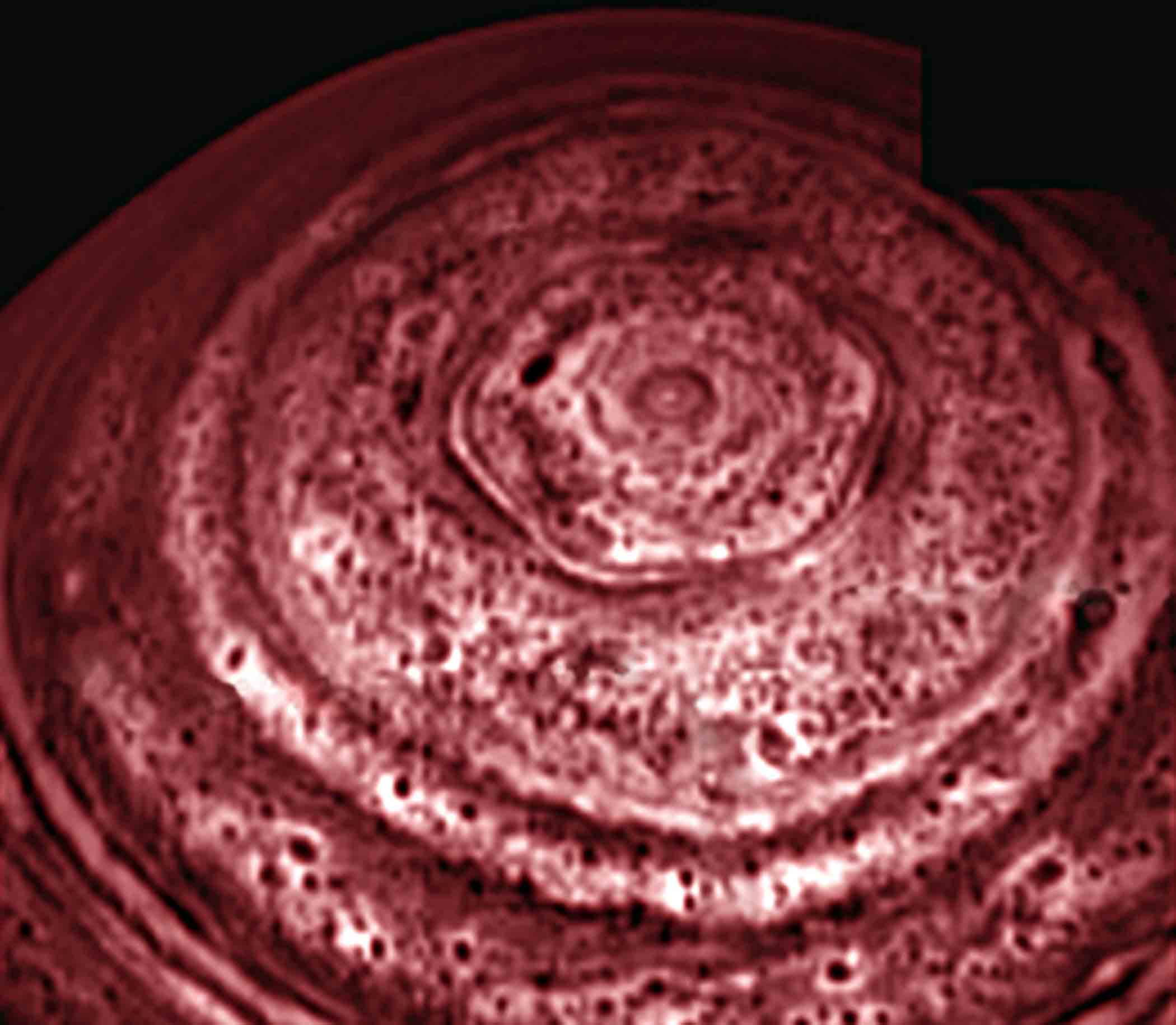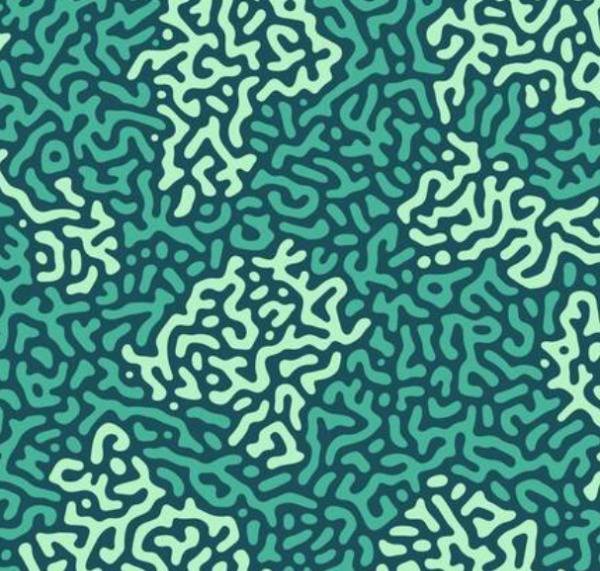
When “air” circulates in a planetary atmosphere, it circulates in, well, a circle. You never get a square hurricane. Or a hexagonal one, do you? Yet this is exactly what has been observed at the north pole of Saturn.
In 2007, when NASA’s Cassini space probe flew over Saturn, it snapped the most bizarre image of a hexagonal arrangement of clouds turning around the pole. The hexagon is almost twice as wide as the Earth. Peculiarly, however, the south pole of Saturn has no matching hexagon, just clouds circulating around an “eye”, as clouds do around the continent of Antarctica on Earth.
Saturn’s “polar hexagon” was actually first spotted by NASA’s Voyager 1 and 2 probes when they flew by the planet a quarter of a century earlier. Evidently the honeycomb-shaped weather system is very stable and long-lived.
A clue to the origin of the polar hexagon comes from laboratory experiments in which a fluid is spun rapidly in a bucket. Under certain conditions, researchers have found that there appears spontaneously an unchanging, or “standing wave”, pattern in the shape of a polygon with three, four, five or six sides. These geometric shapes are thought to be generated in some way by the interaction between the fluid and the walls of the bucket.
Clearly, there are no walls hemming in Saturn’s north pole. Nevertheless, the striking similarity between the fluid-in-a-bucket experiment and the atmosphere of the ringed planet strongly hints at some kind of connection.

